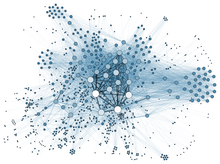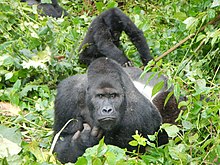A meme is an idea, behavior, or style that spreads by means of imitation from person to person within a culture and often carries symbolic meaning representing a particular phenomenon or theme. A meme acts as a unit for carrying cultural ideas, symbols, or practices, that can be transmitted from one mind to another through writing, speech, gestures, rituals, or other imitable phenomena with a mimicked theme. Supporters of the concept regard memes as cultural analogues to genes in that they self-replicate, mutate, and respond to selective pressures. In popular language, a meme may refer to an Internet meme, typically an image, that is remixed, copied, and circulated in a shared cultural experience online.
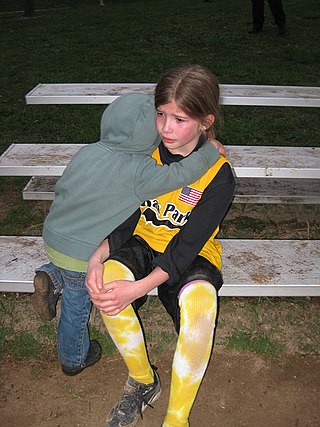
Empathy is generally described as the ability to take on another's perspective, to understand, feel, and possibly share and respond to their experience. There are more definitions of empathy that include but are not limited to social, cognitive, and emotional processes primarily concerned with understanding others. Often times, empathy is considered to be a broad term, and broken down into more specific concepts and types that include cognitive empathy, emotional empathy, somatic empathy, and spiritual empathy.
Social influence comprises the ways in which individuals adjust their behavior to meet the demands of a social environment. It takes many forms and can be seen in conformity, socialization, peer pressure, obedience, leadership, persuasion, sales, and marketing. Typically social influence results from a specific action, command, or request, but people also alter their attitudes and behaviors in response to what they perceive others might do or think. In 1958, Harvard psychologist Herbert Kelman identified three broad varieties of social influence.
- Compliance is when people appear to agree with others but actually keep their dissenting opinions private.
- Identification is when people are influenced by someone who is liked and respected, such as a famous celebrity.
- Internalization is when people accept a belief or behavior and agree both publicly and privately.

Imitation is a behavior whereby an individual observes and replicates another's behavior. Imitation is also a form of that leads to the "development of traditions, and ultimately our culture. It allows for the transfer of information between individuals and down generations without the need for genetic inheritance." The word imitation can be applied in many contexts, ranging from animal training to politics. The term generally refers to conscious behavior; subconscious imitation is termed mirroring.
A mirror neuron is a neuron that fires both when an organism acts and when the organism observes the same action performed by another. Thus, the neuron "mirrors" the behavior of the other, as though the observer were itself acting. Mirror neurons are not always physiologically distinct from other types of neurons in the brain; their main differentiating factor is their response patterns. By this definition, such neurons have been directly observed in humans and primate species, and in birds.
Herd mentality is the tendency for people’s behavior or beliefs to conform to those of the group they belong to. The concept of herd mentality has been studied and analyzed from different perspectives, including biology, psychology and sociology. This psychological phenomenon can have profound impacts on human behavior.
Emotional contagion is a form of social contagion that involves the spontaneous spread of emotions and related behaviors. Such emotional convergence can happen from one person to another, or in a larger group. Emotions can be shared across individuals in many ways, both implicitly or explicitly. For instance, conscious reasoning, analysis, and imagination have all been found to contribute to the phenomenon. The behaviour has been found in humans, other primates, dogs, and chickens.
Animal culture can be defined as the ability of non-human animals to learn and transmit behaviors through processes of social or cultural learning. Culture is increasingly seen as a process, involving the social transmittance of behavior among peers and between generations. It can involve the transmission of novel behaviors or regional variations that are independent of genetic or ecological factors.
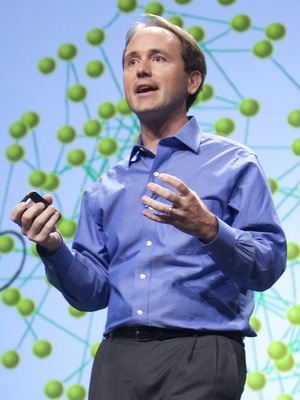
James H. Fowler is an American social scientist specializing in social networks, cooperation, political participation, and genopolitics. He is currently Professor of Medical Genetics in the School of Medicine and Professor of Political Science in the Division of Social Science at the University of California, San Diego. He was named a 2010 Fellow of the John Simon Guggenheim Foundation.
Group emotion refers to the moods, emotions and dispositional affects of a group of people. It can be seen as either an emotional entity influencing individual members' emotional states or the sum of the individuals' emotional states.
Behavioral contagion is a form of social contagion involving the spread of behavior through a group. It refers to the propensity for a person to copy a certain behavior of others who are either in the vicinity, or whom they have been exposed to. The term was originally used by Gustave Le Bon in his 1895 work The Crowd: A Study of the Popular Mind to explain undesirable aspects of behavior of people in crowds. In the digital age, behavioral contagion is also concerned with the spread of online behavior and information. A variety of behavioral contagion mechanisms were incorporated in models of collective human behavior.
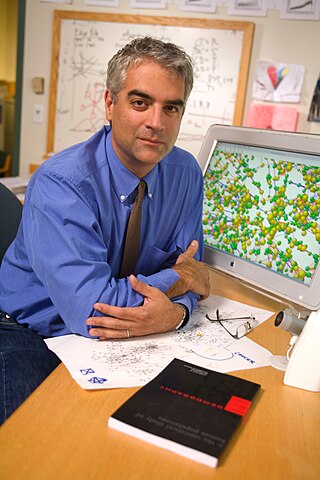
Nicholas A. Christakis is a Greek-American sociologist and physician known for his research on social networks and on the socioeconomic, biosocial, and evolutionary determinants of human welfare. He is the Sterling Professor of Social and Natural Science at Yale University, where he directs the Human Nature Lab. He is also the co-director of the Yale Institute for Network Science.

The friendship paradox is the phenomenon first observed by the sociologist Scott L. Feld in 1991 that on average, an individual's friends have more friends than that individual. It can be explained as a form of sampling bias in which people with more friends are more likely to be in one's own friend group. In other words, one is less likely to be friends with someone who has very few friends. In contradiction to this, most people believe that they have more friends than their friends have.
Complex contagion is the phenomenon in social networks in which multiple sources of exposure to an innovation are required before an individual adopts the change of behavior. It differs from simple contagion in that unlike a disease, it may not be possible for the innovation to spread after only one incident of contact with an infected neighbor. The spread of complex contagion across a network of people may depend on many social and economic factors; for instance, how many of one's friends adopt the new idea as well as how many of them cannot influence the individual, as well as their own disposition in embracing change.

A social network is a social structure made up of a set of social actors, sets of dyadic ties, and other social interactions between actors. The social network perspective provides a set of methods for analyzing the structure of whole social entities as well as a variety of theories explaining the patterns observed in these structures. The study of these structures uses social network analysis to identify local and global patterns, locate influential entities, and examine network dynamics.
Three Degrees of Influence is a theory in the realm of social networks, proposed by Nicholas A. Christakis and James H. Fowler in 2007. It has since been explored by scientists in numerous disciplines using diverse statistical, psychological, sociological, and biological approaches. Numerous large-scale experiments have also documented this phenomenon in the intervening years.
Social determinism is the theory that social interactions alone determine individual behavior.
Imitative learning is a type of social learning whereby new behaviors are acquired via imitation. Imitation aids in communication, social interaction, and the ability to modulate one's emotions to account for the emotions of others, and is "essential for healthy sensorimotor development and social functioning". The ability to match one's actions to those observed in others occurs in humans and animals; imitative learning plays an important role in humans in cultural development. Imitative learning is different from observational learning in that it requires a duplication of the behaviour exhibited by the model, whereas observational learning can occur when the learner observes an unwanted behaviour and its subsequent consequences and as a result learns to avoid that behaviour.

Damon Centola is a sociologist and the Elihu Katz Professor of Communication, Sociology and Engineering at the University of Pennsylvania, where he is Director of the Network Dynamics Group and Senior Fellow at the Leonard Davis Institute of Health Economics.
Over the last fifty years, there has been an increase in the different types of media that are accessible to the public. Most people use online search engines, social media, or other online news outlets to find out what is going on in the world. This increase can lead to people easily viewing negative images and stories about traumatic events that they would not have been exposed to otherwise. One thing to consider is how the dissemination of this information may be impacting the mental health of people who identify with the victims of the violence they hear and see through the media. The viewing of these traumatic videos and stories can lead to the vicarious traumatization of the viewers.
